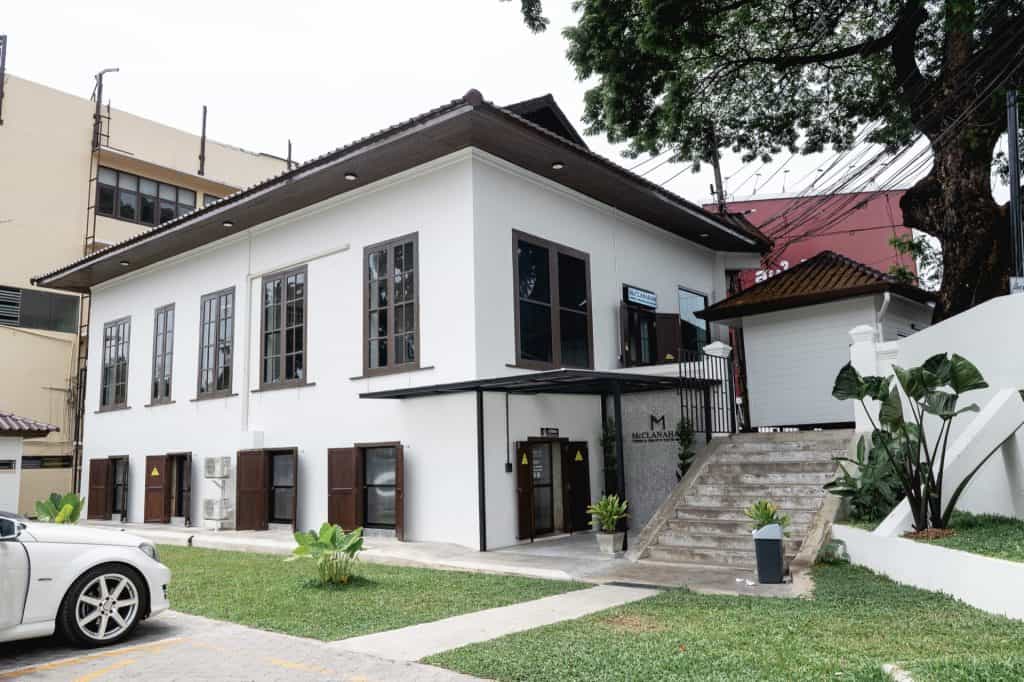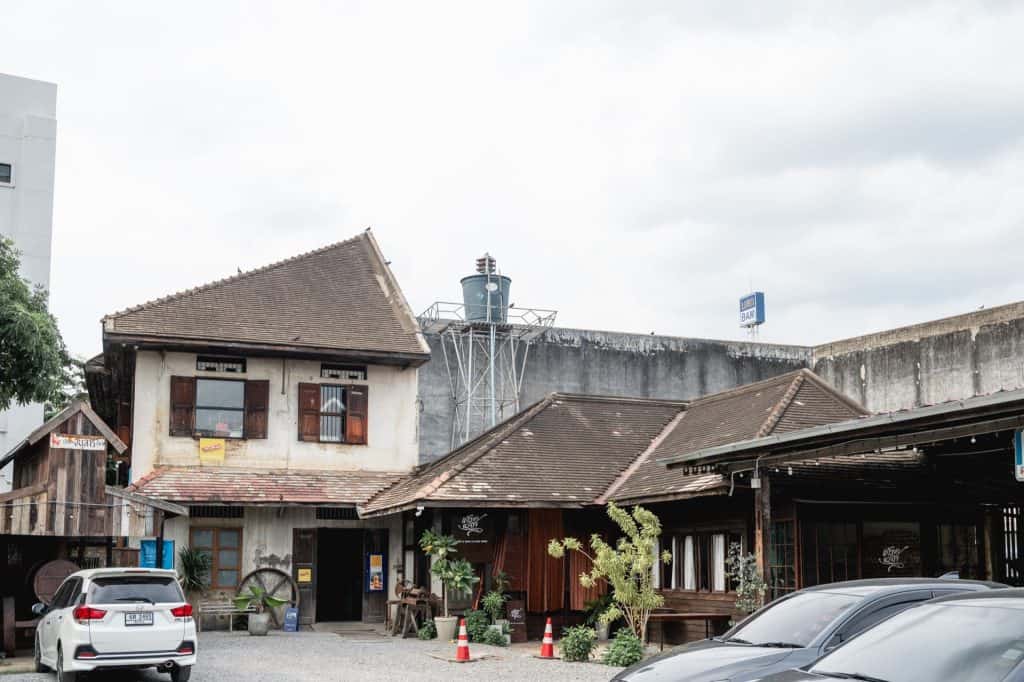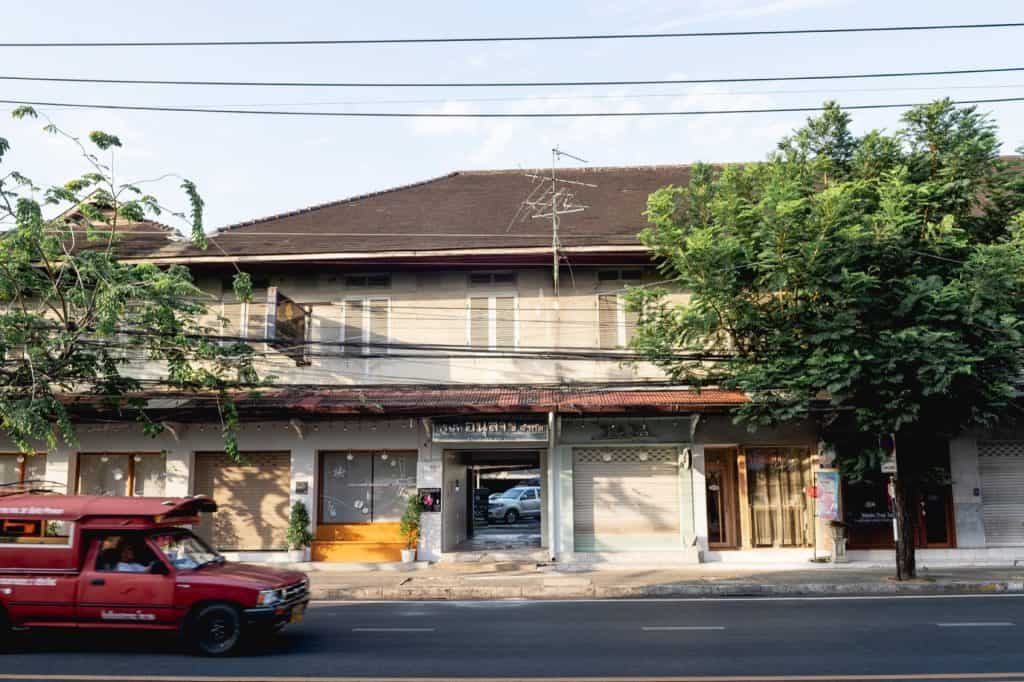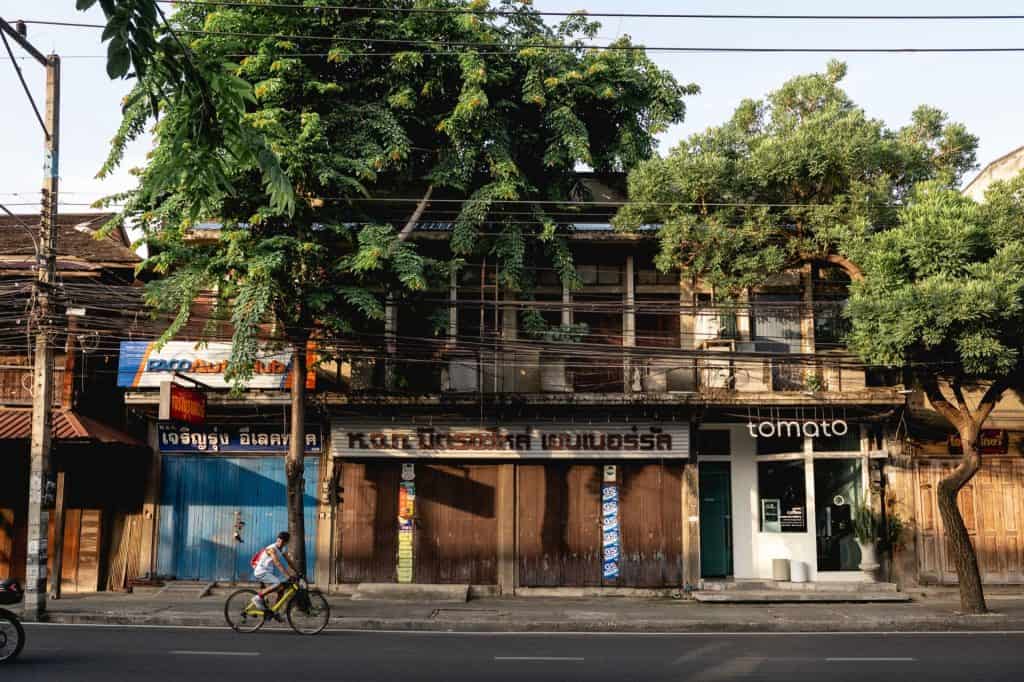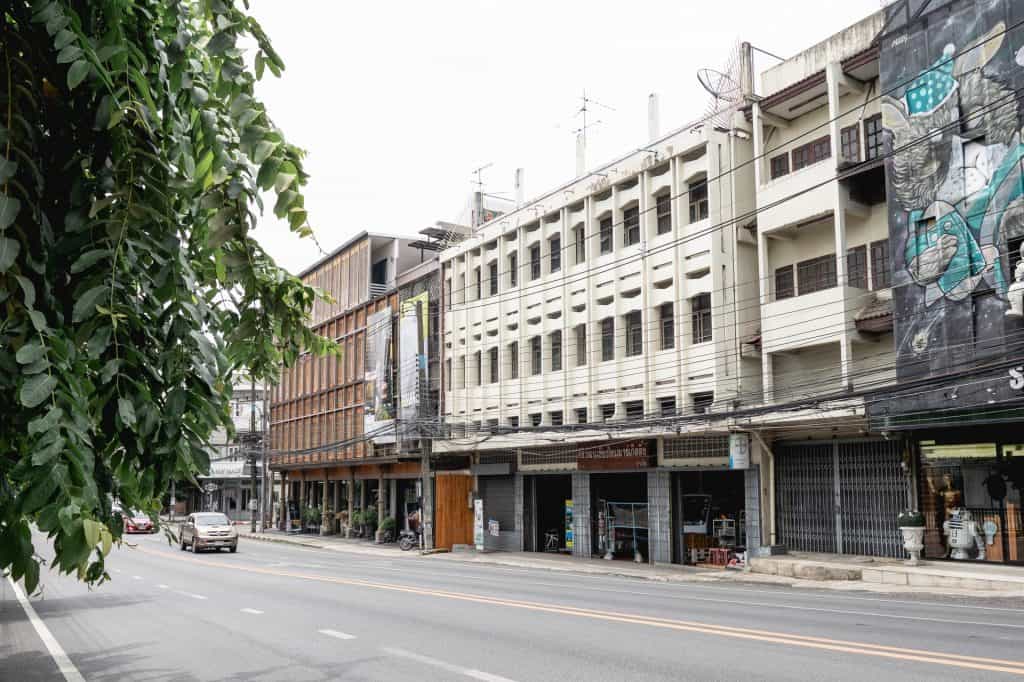San Pa Koi -
Charoen Muang
Creative-Learning
District
Unlock Your Potential with San Pa Koi
Where Creativity Meets Learning!
Creative-Learning
in San Pa Koi - Charoen Muang
Unlock Your Potential
San Pa Koi is a place where students can explore their creativity and unleash their potential. We believe that every student has a unique gift, and we aim to help them discover and develop their talents. Whether it's through art, music, science, or technology, we provide a supportive and nurturing environment that encourages students to grow and excel.
Read moreWhere Learning is an Adventure!
We believe that learning should be an adventure, and we strive to make every experience exciting and memorable. From hands-on experiments to outdoor exploration, we provide a range of activities that engage students and inspire their curiosity. With our experienced instructors and innovative curriculum, students can discover new passions and build the skills they need for success.
Read moreSan Pa Koi -
Charoen Muang District
Small Business Hub
Charoen Muang may be home to a diverse range of small businesses such as cafes, boutiques, and local crafts shops that contribute to the local economy.
Delicious Eats
Charoen Muang may have some unique local delicacies, food stalls, or restaurants serving mouth-watering dishes that are worth exploring.
Heritage Trail
Charoen Muang may have some cultural and historic landmarks, temples, or museums that reflect the district’s history and cultural heritage.
Relaxing Retreat
Charoen Muang may have some parks, gardens, or lakeside areas that offer a peaceful and relaxing atmosphere for residents and visitors to unwind and recharge.
Discovering San Pa Koi - Charoen Muang
San Pa Koi in Charoen Muang is a hub of creativity and learning that inspires students to explore their passions and develop their skills. With its innovative approach to education and supportive environment, San Pa Koi offers a unique and refreshing learning experience.
Architecture Development in San Pa Koi
พื้นที่ย่านสันป่าข่อยที่ชาวเชียงใหม่สามารถนึกถึงได้นั้นอาจมีความต่อเนื่องตั้งแต่บริเวณ ถนนเจริญเมือง (ถนนสันกำแพงเดิม) ตัดกับถนนเจริญราษฎร์และบรรจบกับสะพานนวรัฐ ไปทางเหนือรวมพื้นที่ย่านวัดเกตุจรดถนนแก้วนวรัตน์และลงไปใต้จนถึงยิมคาน่าและโรงไฟฟ้าบ้านเด่น ตลอดจนพื้นที่ชุมชนที่พักอาศัยโดยรอบเขตค่ายกาวิละ อาคารกลุ่มแรกที่เริ่มสร้างขึ้นในย่านสันป่าข่อยและเป็นจุดเริ่มต้นของการเปลี่ยนแปลง กลุ่มอาคารของคณะมิชชันนารี อเมริกันเพรสบีสทีเรียน ที่เข้ามาตั้งแต่ พ.ศ. ๒๔๑๐ แต่ได้มีการปลูกสร้างบ้านพักมิชชันนารีและโบสถ์คริสตจักรแห่งแรกซึ่งเป็นอาคารถาวรสร้างด้วยไม้สักบนพื้นที่ฝั่งตะวันออกของแม่น้ำปิงในช่วงปี พ.ศ.๒๔๓๐-๒๔๓๔ โดยที่ อาคารโบสถ์คริสต์หลังนี้เป็นหลังเดียวที่ยังคงอยู่มาจนถึงปัจจุบันกลายเป็นส่วนหนึ่งของโรงเรียนเชียงใหม่คริสเตียน(Chiang Mai Christian School) ซึ่งนับเป็นอาคารรูปแบบตะวันตกกลุ่มแรกในเมืองเชียงใหม่และได้รับการยกย่องเป็นสถาปัตยกรรมที่ควรค่าแก่การอนุรักษ์ประจำปี พ.ศ. ๒๕๕๘ โบสถ์หลังนี้นับว่าเป็นสถาปัตยกรรมแบบชนบทอเมริกัน (American Country style) โดยในสมัยช่วงเวลานี้เริ่มมีการเข้ามาของบริษัทรับสัมปทานตัดไม้สักจากประเทศอาณานิคมตะวันตก ทำให้โครงสร้างอาคารยุคนี้มีวัสดุหลักคือไม้สักแปรรูปที่หาได้ง่ายเพราะบริษัทค้าไม้และโรงเลื่อยนั้นตั้งอยู่ในบริเวณริมแม่น้ำช่วงนี้ ต่อมา คือ กลุ่มอาคารที่พักอาศัยและเป็นโรงเรียนในระยะแรก คือ กลุ่มอาคารของมิชชันนารีที่ใช้สอนหนังสือไปด้วยในระยะแรกก่อนสร้างอาคารโรงเรียนซึ่งเป็นอาคารไม้สักเช่นเดียวกัน โดยเป็นบ้านไม้สองชั้นขนาดใหญ่ความยาว ๙-๑๐ ช่วงเสา กว้าง ๗-๘ ช่วงเสา ที่มีหลังคาแบบปั้นหยายาวคลุมระเบียง หน้าต่างสูงยาวและเปิดออก โดยใช้ระเบียงเป็นพื้นที่สอนหนังสือชั่วคราว ซึ่งกลุ่มอาคารไม้เหล่านี้เคยอยู่ในบริเวณเดียวกันกับพื้นที่ซึ่งเป็นโบสถ์คริสตจักรที่ ๑ ในปัจจุบันนี้ ซึ่งเป็นลักษณะบ้านเรือนผสมระหว่างระบบโครงสร้างไม้แบบตะวันตกและเรือนพื้นถิ่นที่ถ่ายเทลมสะดวก พื้นที่ย่านสันป่าข่อยในอดีตเป็นทุ่งนา แต่ต่อมากลายเป็นชุมชนขึ้นมา โดยเฉพาะด้านหลังของวัดเกตุเป็นย่านที่มีบ้านไม้สักหลายหลังและพื้นที่บริเวณนี้เป็นของบริษัทบริติชบอร์เนียวมาก่อนซึ่งต่อมากลายเป็นที่ของโรงเรียนดาราวิทยาลัยและโรงพยาบาลแมคคอร์มิค บางส่วนของพื้นที่นี้ยังมีกลุ่มที่ทำการของบริษัทบริติชบอร์เนียว เรียกกันว่า บ้านบอร์เนียวนั้นเป็นอาคารไม้สักซึ่งมีความสำคัญทางประวัติศาสตร์ของเชียงใหม่เนื่องจากเป็นที่พบปะของชาวต่างชาติที่มีชื่อเสียงสำคัญในสยามยุคนั้น[1] กลุ่มอาคารไม้ในพื้นที่ ๕ ไร่นี้ ต่อมาได้รับการบูรณะกลายเป็นโรงแรม บ้านร้อยเสา 137 Pillars และยังคงลักษณะสำคัญของเรือนไม้สักตะวันตกที่ผสมความเป็นอาคารพื้นถิ่นของย่านนี้ไว้ได้ นอกจากนี้ใช้ยังมีเรือนแถวไม้สำหรับค้าขายที่คนเชียงใหม่เรียกกันว่า เรือนแพ หรือ เฮือนแพ…

Type Walk activity, San Pa Khoi
กิจกรรมครั้งนี้ได้รับความร่วมมือจาก สโมสรอักษรศิลป์และอักขรศิลป์เชียงใหม่ (TAC) นำโดยคุณหมูใหญ่ คมสัน ไชยวงค์ ร่วมกับคณะทำงานไจสันป่าข่อย ในการเดินดูงานออกแบบตัวหนังสือจากป้าย ซึ่งมีความเชื่อมโยงกับประวัติศาสตร์และยุคสมัยย่านสันป่าข่อย จากการสำรวจลักษณะการออกแบบตัวอักษรย่านสันป่าข่อย เบื้องต้น สามารถสรุปหมวดหมู่ตัวอักษรในบริบทได้เป็น 3 ประเภทหลัก ๆ คือ กลุ่ม Traditional หรือ Loop Terminal หรือ ตัวอักษรที่มีการเขียนหัวแบบไทย กลุ่ม Modern หรือ Loopless หรือ ตัวอักษรที่มีการปรับให้ทันสมัยละเว้นการเขียนหัว กลุ่ม Latin Type หรือ หมวดหมู่ตัวอักษรลาติน โดยคุณลักษณะที่เห็นได้ชัดเจนในย่านสันป่าข่อย คือ ตัวอักษรแบบ ‘โป้งไม้’ หรือ wood type (Chinesse style) ผสมผสานกับตัวอักษรแบบสมัยใหม่ อันเป็นการสะท้อน ประวัติศาสตร์ของย่านสันป่าข่อยที่มีทั้งความเก่าและใหม่ผสมผสานในพื้นที่ ขอบพระคุณสถานที่ อาคารอนุสาร - Anusarn Building Chiang Mai และร้านกาแฟ Building…

McClanahan from Western Hospital To the cafe in the missionary building. Interview with Mr. Chawan Chaiyaset, assistant manager of McCormick Hospital.
The origins of the McClanahan store: “This area and the McClanahan building belong to the Foundation of the Council of Churches in Thailand. The approximate area starts from this building and ends at Rarin Jinda Wellness Spa Resort for this building last year. The Foundation has assigned McCormick Hospital to be its caretaker. The hospital management team has We had a meeting and the initial ideas for this building were 2 types: 1. Make a clinic. There was a part where we had to think about what kind of clinic it would be. And about the standards that will follow, the second type is to turn it into a coffee shop. After considering for a while, we came to the conclusion that it would be better to open a coffee shop. Its purpose is to preach and spread the Christian story. along with earning income The story told with this building focuses on the foundation's mission. By using images of buildings from many places. The area is displayed as a photography exhibition. This shop opened on December 9, 2022. It will be one year in a few months.” History of the building and land next to Nawarat Bridge. “To begin with, Prince Kawila gave this land to the American Presbyterian missionary group to live in. This area therefore serves as a residence. and is a place for treatment, selling medicine, and spreading religion to local people This building was built in 1921 as a Health Center for treatment and medicine. Enough with McCormick Hospital The missionaries gave this building to the hospital to take care of, probably around 1950, after which it was turned into a library. And there is a Christian book printing house…

Anusan Building, today to the future Chat with Mickey The 5th generation descendant of Royal Anusarn Sunthorn and the caretaker of the Anusarn building.
Before taking charge of the Anusan Building What kind of work has Khun Mickey worked before? Actually, I've only been back for 2 years. Before that, I worked in Bangkok as a language support company, as a consultant for Japanese companies that invest in Thailand, helping support interpreting and document translation work. business facing As for the reason for returning to Chiang Mai, it was before that. The family had been inviting me to come back to Chiang Mai for a long time. But we are not ready yet because the child is still small. And there was a company that had to take care of working with foreigners. At that time it was mainly face to face, but when COVID hit, the situation changed and more people turned to online. So we felt that it was no longer necessary to stay in Bangkok and that it was a good time to return to Chiang Mai. The first time I came back I didn't plan much. Mainly I came to help look at the main business at home. namely taking care of Warorot Market, Kham Thiang Market, and Longan Tree Market. While taking care of the three markets, we saw that Father (Khun Somyot Nimmanhaemin) had been taking care of the Anusan Building for a long time. We thought that this place actually had its charm. I think it could be used as a rental space. And then it will help. and was able to help his father with his work as well So I came in to help develop this. since the beginning The way I thought of opening the building for rent until today is almost two years ago. Yes, the start period should be around November 2021. The first tenants were the Withi Laab Shop...

Click Download to save The Future Of San Pa Koi mp3 youtube com
San Pa Khoi and Anusan Building, memories from the era of Luang Anusan Sunthorn to Khun Somyot Nimmanhaemin.
Ask Mr. Somyot to please tell us your memories related to the Anusan Building. and the San Pa Khoi area Please give us a listen. “I would like to start with Khun Luang Anusarn Sunthorn. Khun Luang is of Chinese descent. The family settled in Thailand as far back as the Ayutthaya period. Khun Luang is considered to be the 4th generation. From Ayutthaya, when the city fell, the next generation moved to Thonburi. Then gradually moved to Lampang, Lamphun and Chiang Mai. Khun Luang was born in Lamphun on the banks of the Kuang River. After staying for a while, the family moved to trade in the Soptha area. and moved to in front of Wat Ketkaram Chiang Mai city While staying at Wat Ket At that time, Anam's age was in his teens. Learned to repair bicycles, kerosene lamps, clocks, and even firearms. Soon they migrated to the Tha Phae side. Around the age of 25-30 years, Khun Luang sailed down to trade between Chiang Mai and Bangkok. At that time, business was going well. So he built a house on Wichayanon Road. His Majesty recorded that he traded up and down Chiang Mai-Bangkok more than 50 times. In that era, sailing from the north to the south Chiang Mai to Bangkok takes 1 month. Up from Bangkok back to Chiang Mai takes 2 months. Each year, there will be about 2 trips. In addition to the business going well. Khun Luang had the opportunity to learn photography using glass film. Considered to be the first person to take pictures in Chiang Mai. At that time there was a forest survey by a group of Western technicians. These foreigners are employees hired by the government during the reign of King Rama V and missionary groups...

San Pa Koinian (San Pa Khoi Nian) We are 'San Pa Khoi people' with the people of San Pa Khoi, Aom Ichaya Aksornsophonphan.
Creative San Pa Khoi District Project Had the opportunity to interview Mr. Aom Ichaya Aksornsophonphan. Real San Pa Khoi people Born and raised here And are proud to call ourselves "San Pa Koinian" (San Pa Khoi people). Come listen to the story of San Pa Khoi through the eyes, memories, and thoughts of the San Pa Khoi people. Tell stories from the hearts of insiders who want outsiders to get to know them. and fell in love with San Pa Khoi with her. ___ Let me tell you a little bit about my childhood. What was San Pa Khoi like at that time? Aom would like to tell the story through the eyes of a 42 year old person. Born here, lived here all my life. It can be said that you should see it at every moment of San Pa Khoi, but your childhood memories may be missing sometimes. It can be summed up in 3 words: calm, comfortable, good business. The memorable image is of bustle during the daytime. Each store has customers coming in and out all the time. But in the evening after closing time there is calm. Most importantly, it's quite convenient because our house is in the city. Traveling anywhere is easy. Close to the market, close to schools, close to hospitals. Adults talk about this matter so often that they remember it. If you count the generations, Aom is the 3rd generation heir living in this area. The first generation were the Agong who came to settle here. When Mr. Uncle Gong came in Where did you stop? Before arriving at San Pa Khoi Grandma once told me that Agong is a Teochew Chinese who came to Thailand. Passing through Cambodia and then heading to Thailand via Chanthaburi or Trat. I'm not quite sure about the province that I came in from...

San Pa Koi
เมืองเชียงใหม่มีการพัฒนามาอย่างยาวนานกว่า 700 ปี แต่เมืองเชียงใหม่ที่เริ่มมีการเปลี่ยนแปลงและเป็นจุดเริ่มต้นในการเข้าสู่ยุคสมัยใหม่นั้นเกิดในพื้นที่ด้านตะวันออกของตัวเมืองตั้งแต่บริเวณริมสองฝั่งแม่น้ำปิงตามแนวถนนเจริญเมืองไปจนถึงสถานีรถไฟเชียงใหม่ ย่านนี้กลายเป็นต้นกำเนิดของสาธารณูปโภคและสาธารณูปการต่างๆ ที่เป็นโครงข่ายพื้นฐานสำหรับการพัฒนาเมืองสมัยใหม่และเป็นพื้นที่ที่เปิดรับกระแสการเปลี่ยนแปลงจากโลกภายนอกที่เริ่มต้นจากการเข้ามาของชาวตะวันตกซึ่งมีบริษัทรับสัมปทานตัดและค้าไม้สักของอังกฤษและมิชชันนารีอเมริกันซึ่งได้เริ่มตั้งถิ่นฐานในปี พ.ศ. 2407 เป็นต้นมาซึ่งมีผลทำให้มีชาวต่างชาติต่างถิ่นที่หลากหลายเข้ามาทำงานและประกอบธุรกิจ กับ ชุมชนชาวตะวันตกจนเกิดเป็นชุมชนใหม่ที่มีพลวัตในขับเคลื่อนสังคมเศรษฐกิจของเมืองเชียงใหม่มาจนถึงปัจจุบัน พื้นที่ย่านสันป่าข่อยและวัดเกตุจึงนับได้ว่าเป็นพื้นที่สำคัญในประวัติศาสตร์สมัยใหม่ของเมืองเชียงใหม่เพราะเป็นพื้นที่ในช่วงรอยต่อที่เมืองมีการพัฒนาจากการเป็นศูนย์กลางอำนาจของอาณาจักรล้านนาซึ่งเป็นรัฐจารีต ประเทศราชเดิมภายใต้อาณาจักรอยุธยาหรือสยาม เมื่อมีการเปลี่ยนแปลงจากภายนอก เชียงใหม่จึงได้ก้าวไปสู่ความเป็นเมืองศูนย์กลางของภูมิภาคเหนือทั้งการปกครอง เศรษฐกิจและสังคมในรัฐชาติสมัยใหม่ของประเทศสยามหรือประเทศไทยในเวลาต่อมา ประวัติศาสตร์สมัยใหม่ของเชียงใหม่ ได้เริ่มต้นจากพื้นที่ริมแม่น้ำปิง ชุมชนสันป่าข่อยและวัดเกตุจนถึงปัจจุบันที่มีการเปลี่ยนแปลงอย่างมาก โดยสามารถแบ่งได้เป็น 3 ช่วงเวลาสำคัญ เชียงใหม่ภายใต้รัฐจารีตล้านนาและรัฐอาณานิคมตะวันตก: ต้นกำเนิดชุมชนทันสมัยริมแม่น้ำปิง พ.ศ. 2407-2440 การล่าอาณานิคมของอังกฤษและฝรั่งเศสในภูมิภาคเอเชียตะวันออกเฉียงใต้ เป็นปัจจัยหลักต่อการเปลี่ยนแปลงของเชียงใหม่อย่างหลีกเลี่ยงไม่ได้ เมื่อ อังกฤษเข้ายึดพม่ารวมถึงหัวเมืองของไทใหญ่ที่ล้านนาถือเป็นส่วนหนึ่งของอาณาจักรสำเร็จและฝรั่งเศสเข้ายึด เวียดนาม ลาวและกัมพูชา และมีการตัดลากไม้สักจากพื้นที่ป่ารอยต่อของพม่ากับอาณาเขตของอาณาจักรล้านนา ไม้สักในป่ากลายเป็นสินค้าที่ต้องการในยุโรป อังกฤษจึงผลักดันให้สยามเข้ามาจัดการการปกครองล้านนาเพื่อการทำธุรกิจที่มีผลตอบแทนสูงอย่างสัมปทานไม้สัก บริษัทค้าไม้บริติชบอเนียวซึ่งรับสัมปทานตัดไม้จากอังกฤษขยายตัวจากธุรกิจไม้ในประเทศเพื่อนบ้านได้เริ่มเข้ามาในเชียงใหม่ตั้งแต่ พ.ศ. 2407[1] การติดต่อค้าขายเพิ่มมากขึ้นพร้อมกับข้อพิพาทที่มากด้วยเช่นกัน จนทำให้เกิดสัญญาเชียงใหม่ ฉบับที่ 1 (พ.ศ.2416) ที่อังกฤษและชาติตะวันตกได้รับสิทธิสภาพนอกอาณาเขตในล้านนา จึงยอมรับอำนาจของสยามในการจัดการข้อพิพาทต่างๆและฉบับที่ 2 (พ.ศ.2426) มีการตั้งข้าหลวงจากสยามมาประจำ เพื่อจัดเก็บภาษีอากรและการจัดการป่าไม้ เป็นการดึงอำนาจบริหารจัดการเศรษฐกิจหลักออกจากอำนาจของเจ้าล้านนามาข้าราชการจากกรุงเทพฯ ซึ่งทำให้การค้าขยายตัวมากขึ้นไปอีก บริษัทต่างชาติเหล่านี้ เช่น บริติชบอร์เนียว บอมเบย์เบอมาร์…



